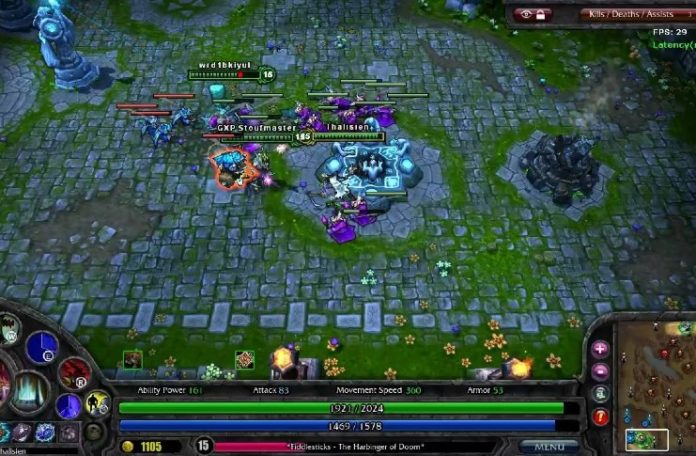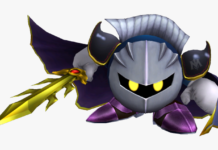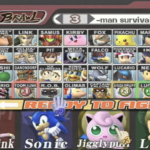If any genre of video game was synonymous with esports, it would be the multiplayer online battle arena (MOBA.) In the last decade, multiple MOBA titles have been responsible for a large percentage of the viewership and prize money in the esports industry. More than any other style of game, MOBAs have been extremely appealing for players and spectators alike.
But what exactly is a MOBA? Where did this kind of game come from? Why is it so popular? We’ll dive into all of this, and more, with a thorough look at this bedrock genre of esports.
What Is A MOBA?
The multiplayer online battle arena is a team-based game that draws influence from real-time strategy and role-playing genres. While there are many different MOBAs out there, they all generally follow the same blueprint. This means that once you get a general idea of how MOBAs work, you should be able to follow what’s happening in any particular title, even if you’re short on the game-specific details.
MOBAs will pit two teams of five players using characters known as “heroes” or “champions” against each other on a battlefield map, with each team having a core structure on their end of the map. The first team to destroy the opposing team’s core structure wins the game. (Examples of “core structures” would be the nexus in League of Legends, or the Titan in Smite.)
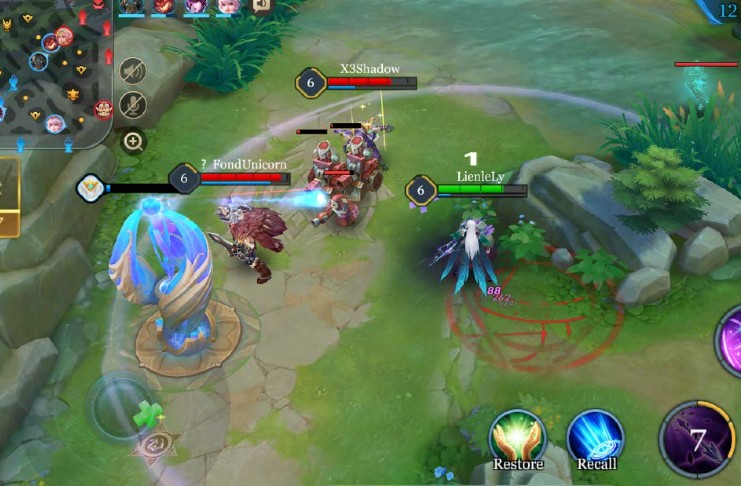
Characters in MOBAs have unique abilities and traits that grow stronger as the match goes on. Additionally, characters fit certain “roles” in that their attributes and playstyles are meant for different aspects of the game. Examples of character roles include:
- Tanks – Large characters meant to withstand massive damage. Defining characteristics include strong defense and high health points.
- Attack Damage Carry (ADC) – Known as the damage dealer. Defining characteristics include strong basic attacks and scaled attack stats throughout the game.
- Support – The backbone of the team, meant to disrupt enemies or strengthen allies. Defining characteristics include healing and team buffs.
A defining feature of MOBAs is experience points and gold: characters start every match at a low level and gain experience by fighting enemy units and characters. As they level up throughout the match, they gain access to and strengthen the rest of their abilities. Additionally, players accrue gold throughout the match that is used to buy items and consumables that further beef up their characters.
So how do teams use their characters to destroy the opposing core structure? Well, every map has three lanes that connect the two teams’ core structures. There are known as the top, middle and bottom lanes (you will almost always hear the shorthands for these, which are “top” “mid” and “bot.”) What character a player picks will decide their role, which in turn decides which lane they will start in.
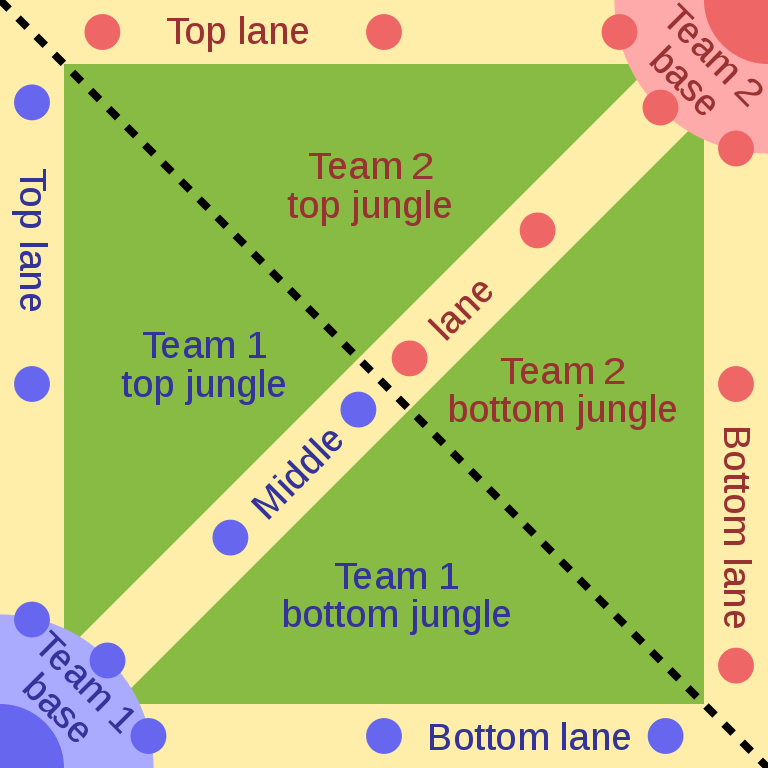
In each lane, there are defensive structures such as “towers” that will blast anyone who comes within their radius. This poses a problem: how can a team advance to the opposing side’s core structure if these towers shoot them down? This is where minions come in.
Minions are computer-controlled units that are constantly generated in each team’s home base once the match starts, and they traverse all three lanes. Using minions allows players to pressure the opposing team, with minions able to draw the defense structures fire to allow players to inflict damage and eventually destroy them.
Finally, there are the areas between each lane; these are known as jungles, and they are filled with wild enemies and monsters that can be farmed for gold and experience, as well as some monsters helping players pressure in lane battles. Additionally, jungles are a great way to link up with teammates from different lanes for ambushes and larger team fights.
In much more simple terms: MOBAs are about two teams of five moving through three lanes to find openings and push through the enemy’s defenses to eventually destroy the opposing team’s core structure to win.
The Origins Of MOBA
While there are traces of influence in games such as Herzog Zwei and Future Cop: LAPD, the early foundations of the MOBA genre started to show themselves with the StarCraft custom map editor: Aeon of Strife (AoS.)

AoS had players controlling a single hero unit fighting against hordes of AI-controlled enemies that spawned in three lanes. Additionally, slaying these enemies gave players materials that could be used to purchase upgrades, a precursor to the gold system. Many MOBA elements were yet to come, but AoS helped establish a map structure and flow of minions that has become a staple in the genre.
The original MOBA game was Defense of the Ancients (DotA,) a mod for Warcraft III. Building on the foundation of AoS, DotA rounded out the MOBA characteristics by adding experience points and gold, as well as unique abilities for the hero units.
What set DotA apart from the more real-time strategy games of the time (and what has made the MOBA genre so distinct) was the focus on character growth through the gold system; RTS games focused on resource gathering and management, whereas combat was the fastest way to acquire gold in DotA, adding more action-elements to the pace of the game.
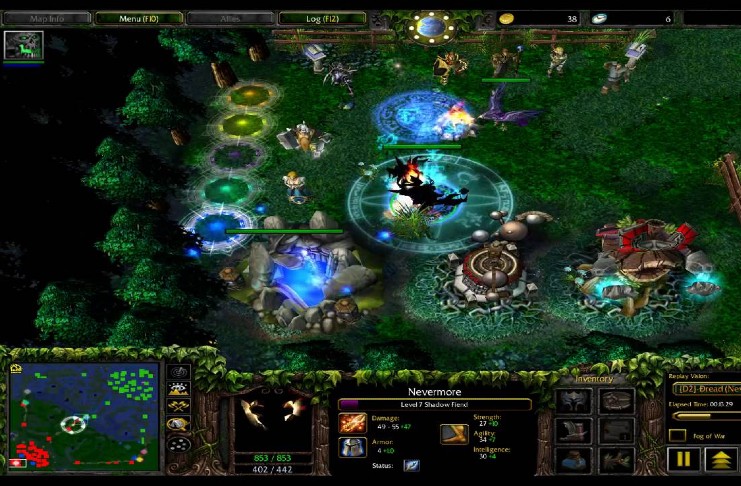
DotA’s popularity was the starting point of the MOBA genre: games such as League of Legends have direct ties to the work done on DotA. Additionally, Blizzard Entertainment created Heroes of the Storm, a MOBA inspired by DotA that includes Warcraft assets. Finally, a sequel developed by Vale, Dota 2, is one of the more popular MOBAs in esports.
Why Are MOBAs So Popular?
With first-person shooters, fighting games, sports games and more, one question becomes clear: how did MOBAs become so popular?
For some, the connection with Warcraft and StarCraft is sure to help; both of those games have been immensely popular, and fans who played mods that led to the foundation of MOBAs could have carried over in decent numbers. The genre could’ve offered something different that appealed to fans of these classics.
The social aspect of MOBAs is a huge reason as well. MOBAs are a blast with the right group of people, and the team limit of five players allows for a group that isn’t too crowded or isolated. Additionally, if you can wade through the toxicity commonly associated with MOBAs, you’ll find a lot of players who want to connect with new players and new experiences.

MOBAs have also drawn considerable appeal for their accessibility. Many MOBAs are free-to-play, and don’t require thoroughly advanced computer specs to run, making it open and accessible to just about anyone. The fact that anyone reading about a MOBA could realistically download it and try it out immediately rather than having to shell out $60 for the experience has been a huge boon to the genre’s popularity.
Additionally, MOBAs have considerable depth that make them appealing to players. With over a hundred characters to choose from in some games, multiple abilities and playstyles, and the general strategies during a match, there is so much to learn. The skill ceiling is incredibly high in MOBAs, meaning you can constantly be improving and evolving as a player; you will never feel like you’ve “solved” or “plateaued” in a MOBA.
Now these are all points that work for those interested in playing MOBAs, but the more intriguing question is: why are MOBAs such a dominant esports in regards to viewership? What makes this genre much more appealing as a casual fan rather than just as a competitor?
Well, one obvious answer is the resources put into it: developers such as Valve and Riot Games will put up serious money in terms of prize pools and advertising campaigns to capitalize on the large audience that is introduced to MOBAs via its accessibility. But a more likely reason for why a pure spectator would lean towards appreciating MOBAs is that MOBAs are much easier to watch.
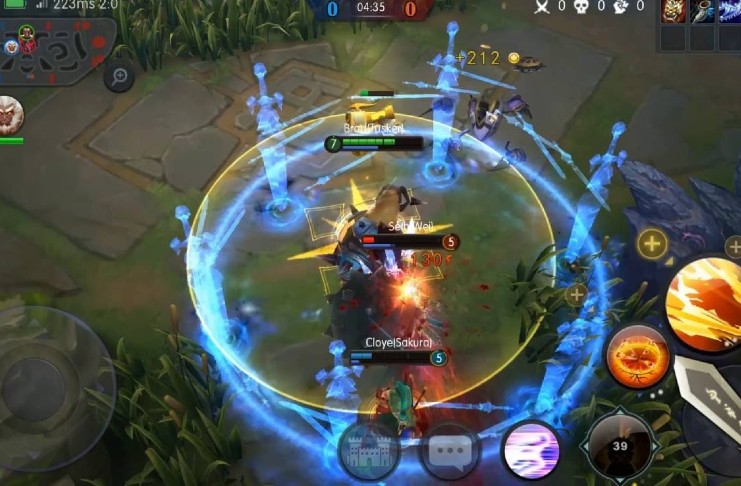
Visually, it’s easier to focus on the action in MOBA matches, such as when a big teamfight goes down. The color schemes, open map and player decisions always present themselves quite clearly to viewers, even if the intricacies get lost: if someone has a basic understanding of what needs to get done in a MOBA, they will be able to connect with what’s happening on the screen. Perhaps the biggest hurdle to growing viewership in esports is getting people who aren’t familiar with any esports title to follow along with the action. MOBAs currently have the clearest visuals for non-endemic viewers.
The Most Popular MOBA Games
The success of the MOBA genre has spawned many spinoffs and copycats in an attempt to capitalize on the craze. While every game has its own unique twists and additions, every MOBA generally follows the same game structure and free-to-play model. A few examples of incredibly popular MOBAs include:
- League of Legends – The most popular MOBA in the world, as well as the largest esports scene in terms of playerbase, viewership and income.
- Dota 2 – The sequel to the original MOBA DotA, Dota 2 is one of the largest esports titles in the world, and has received extensive praise for its complexity and depth.
- Heroes of the Storm – A very popular MOBA developed by Blizzard Entertainment, Heroes of the Storm features characters and aesthetics from many popular Blizzard franchises such as Diablo, Warcraft, StarCraft and Overwatch.
- Smite – A popular MOBA based on Gods/Goddesses of various mythologies from around the world, Smite notably differs from other MOBAs by playing from a third-person rather than an isometric perspective.
How Can I Learn More About MOBA In Esports?
The best way to learn more about MOBA games is to look up specific videos and articles on specific games and their respective esports scenes. Despite most MOBAs following the same basic gameplay, the different aesthetics and details are what will help you find a MOBA that’s right for you. Examples of informative and interesting videos include:
From Broken Mess to Global Phenomenon: The Story of League of Legends
MOBA games have dominated a large portion of the esports industry for the last decade, and they show no signs of slowing down. Taking the time to learn the basics and to find the game that interests you most will help connect you with one of the most exciting and fastest growing spectator events in the world.


